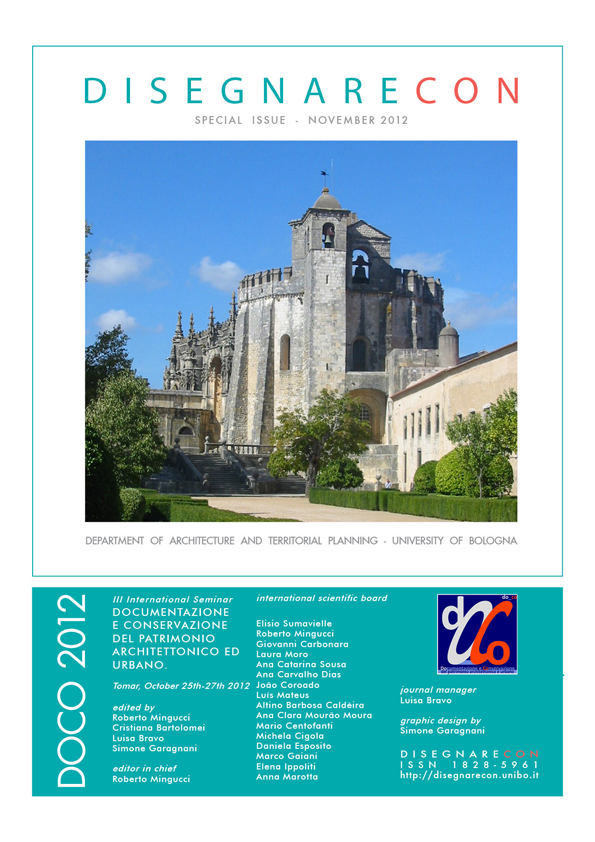Integrated Information Systems
DOI:
https://doi.org/10.6092/issn.1828-5961/3352Keywords:
GIS, AIS, Web, Topology, 3D Models, Cultural HeritageAbstract
Currently in the field of management, enhancement, territory and cultural heritage analysis, two types of information systems offer significant tools: GIS (Geographic Information System) and AIS (Architectural Information System). The first one manages urban and territorial scale data, the second one administers architectural scale data. For a complete management and analysis of heritage both scales (territorial-urban and architectural) are essential. But despite numerous attempts made in recent years, currently no system is really able to manage them simultaneously. This study aims to create a hybrid system, which is a new interface that allows to simultaneously view an AIS, a GIS and a window for management of spatial queries. Considering the profound differences between the two systems, the ultimate goal is to integrate them by proposing a new Hybrid System (HS) to solve the problem of scale change (from analysis to synthesis) using a new data structure and a new interface. To achieve the ultimate goal it has been studied mainly: a) the possibilities of implementation of the two systems; b) spatial analysis and 3D topology.
References
Attene, M., Robbiano, F., Spagnuolo, M., Falcidieno, B., (2009), Characterization of 3D shape parts for semantic annotation, in Computer-Aided Design, 41(10), pp. 756-763.
Cundari, C., (2005) (by), Il rilievo urbano per sistemi complessi. Un nuovo protocollo per un sistema informativo di documentazione e gestione della città, Roma, Kappa.
De Luca, L., Busarayat, C., Stefani, C., Véron, P., Florenzano, M., (2010), A semantic-based platform for the digital analysis of architectural heritage in Computers & Graphics Volume 35, Issue 2, April 2011, pp. 227–241.
Dudek, I., Blaise, J-Y., Beninstant, P., (2003), Exploiting the Architectural Heritage’s Documentation: A Case Study on Data Analysis And Visualisation, in Proc. of Conference I- KNOW ‘03, Graz, Austria.
Ippoliti, E., (2010), Mappe, modelli e tecnologie innovative per conoscere, valorizzare e condividere il patrimonio urbano. Indagini sperimentali di sistemi integrati sul Piceno, in Sistemi informativi integrati per la tutela, la conservazione e la valorizzazione del patrimonio architettonico e urbano, MIUR PRIN COFIN 2006, a cura di Brusaporci S., Roma, Gangemi Editore.
Ippoliti, E., Meschini, A., Rossi, D., Moscati, A., (2011), An approach towards the construction of a Digital Atlas for the documentation of cloister and courtyards in Ascoli Piceno, in Proc. of International Conference 3D ARCH, 3D Virtual Reconstruction and Visualization of Complex Architectures, Trento, Italia, 2-5 Marzo 2011.
Mingucci, R., Centofanti, M., (2008) (by), Conservazione del Patrimonio Architettonico e Urbano in DISEGNARECON Vol. 1 n. 2 (2008), Digital Magazine, Dipartimento di Architettura e Pianificazione Territoriale, Università di Bologna.
Moscati, A., (2006), Architettura delle informazioni e dati geografici 2D: database e GIS, in Sistemi informativi integrati per la tutela, la conservazione e la valorizzazione del patrimonio architettonico e urbano, MIUR PRIN COFIN 2006, a cura di Brusaporci S., Roma, Gangemi Editore.
Solonia, P., Negri, A., (2005), ARKIS-NET: un web-GIS per il progetto di conservazione assistito, in Archeologia e Calcolatori 16, pp. 167-176.
Zlatanova, S., (2000), 3D GIS for Urban Development, Ph.D. thesis. Digital version available at the page http://www.gdmc.nl/zlatanova/PhDthesis/pdf/content.html.
Downloads
Published
How to Cite
Issue
Section
License
Copyright (c) 2012 Annika Moscati





